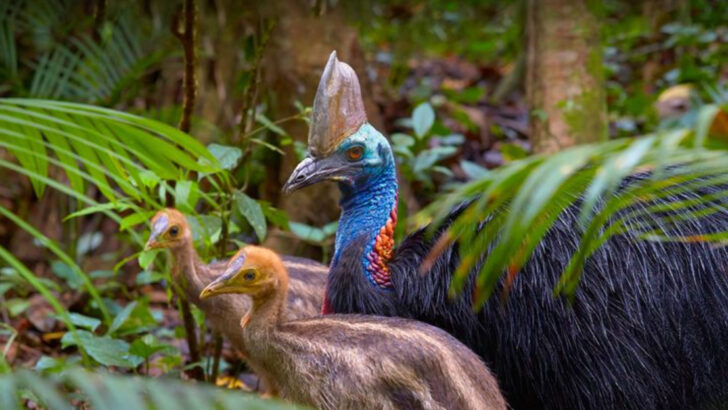It can disembowel a grown man with one kick—and it doesn’t even fly.
Meet the cassowary: part bird, part dinosaur, part nightmare on two legs. With a face straight out of a Jurassic fever dream and claws that belong in a horror movie, this creature doesn’t just look dangerous—it is.
Forget talons like an eagle or speed like an ostrich.
The cassowary comes with a helmeted head, dagger-like toes, and the attitude of a gladiator in feathers.
It doesn’t start fights.
It ends them.
You might think the world’s most dangerous bird would be a massive raptor or something straight out of a documentary narrated by doom.
Nope. It’s this tropical, mohawked menace from Australia and New Guinea—and it’s way scarier than it looks.
Let’s talk about why the cassowary is the last bird you want to meet on a jungle trail.
Powerful Legs
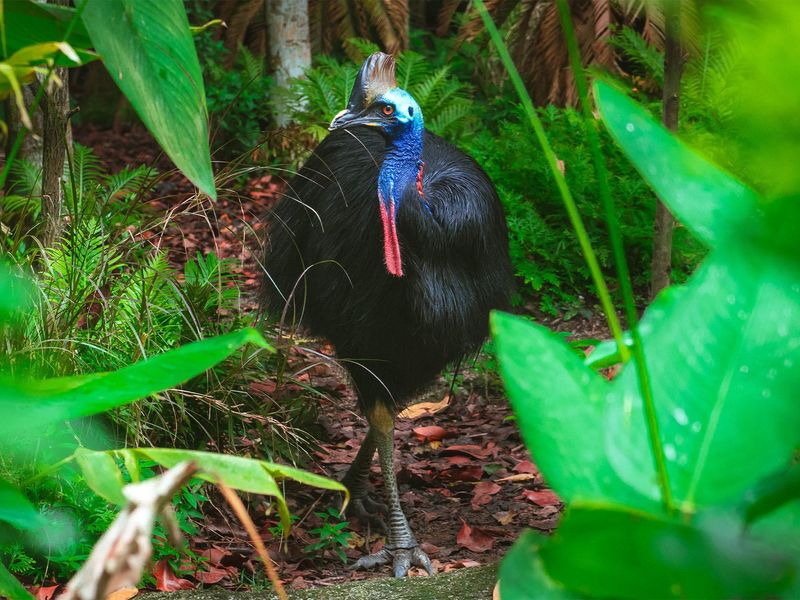
Imagine a bird with legs as strong as steel springs. The cassowary’s legs are built for power, capable of delivering kicks that can cause serious injury. These legs aren’t just for show; they are a primary defense mechanism. With a swift motion, a cassowary can use its legs to leap and strike, its claws becoming lethal weapons. In the dense underbrush of its habitat, these powerful kicks can be the difference between life and death, not just for the cassowary but for anything that poses a threat to it.
Sharp Claws
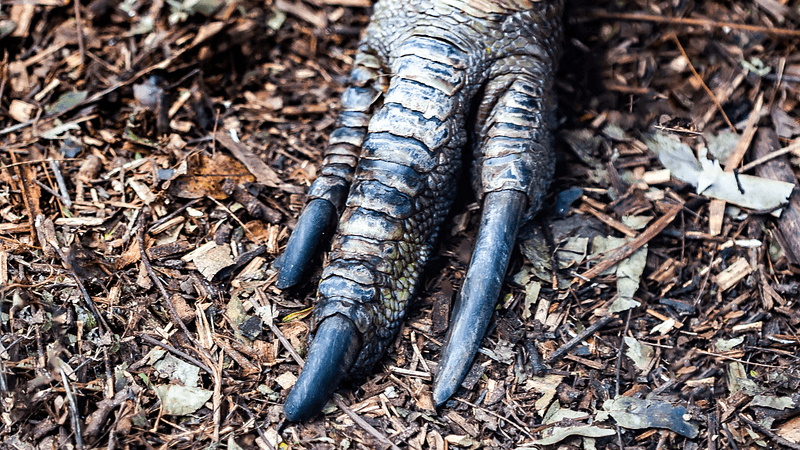
The cassowary’s claws are like nature’s knives. Each claw can reach lengths of up to five inches, curved and sharp as a dagger. These claws are not just for gripping; they’re designed for slashing. A swipe from a cassowary can easily cut through foliage and intimidate predators. In the wild, these talons are crucial for survival, making the cassowary a formidable opponent to any who dare cross its path. With such weaponry, it’s no wonder the cassowary commands respect and caution.
Agility in the Underbrush
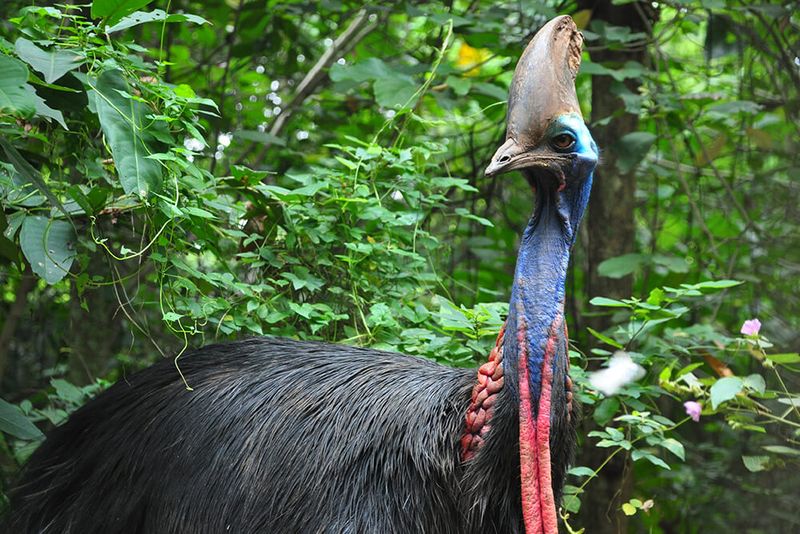
Picture a bird that can disappear into thick vegetation with ease. The cassowary’s agility is unmatched, allowing it to navigate through its forest home with remarkable speed and stealth. This ability to move quickly through the underbrush protects it from predators and surprises intruders. Imagine the rustle of leaves as it darts past, almost invisible despite its size. It’s this agility that allows the cassowary to be both a ghost and a guardian of the rainforest, slipping through its leafy domain like a shadow.
Intimidating Size

Standing as tall as a human and weighing over 100 pounds, the cassowary is a towering figure. Its presence alone can be intimidating, making it a force to be reckoned with. When you come face to face with a cassowary, its size can be overwhelming, a testament to its dominance in the animal kingdom. This imposing stature is both a deterrent and a declaration of its territorial control. Despite not being the largest bird, it uses its size to its advantage, commanding the respect of all who encounter it.
Helmet-Like Casque

The cassowary is crowned with a unique helmet-like casque atop its head. This bony structure is more than ornamental; it’s an evolutionary marvel that helps it navigate through the dense forest. Acting like a natural battering ram, this casque allows the bird to push through thick foliage effortlessly. The casque also plays a role in communication and display, making it a multifaceted tool in the cassowary’s arsenal. It’s an integral part of what makes the cassowary so distinctive and so well-adapted to its environment.
Striking Blue Skin
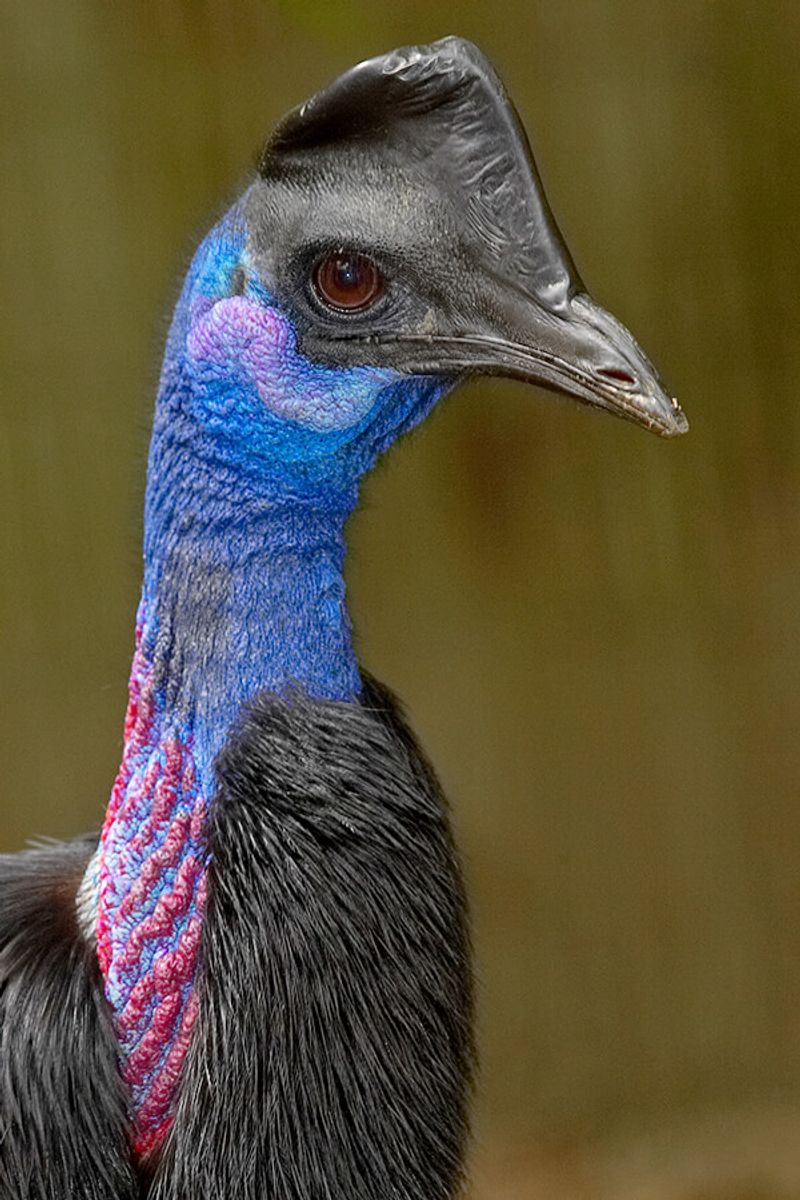
With a neck and head covered in stunning blue skin, the cassowary is a sight to behold. This vibrant color is not just for beauty; it plays a role in communication and mating rituals. In the dim light of the rainforest, this brilliant blue can stand out, sending signals to fellow cassowaries. It’s a form of visual communication that adds another layer to its complex behavior. The striking blue is a reminder of the cassowary’s unique place in the natural world, a beacon of life in the verdant jungle.
Speedy Escape Artist
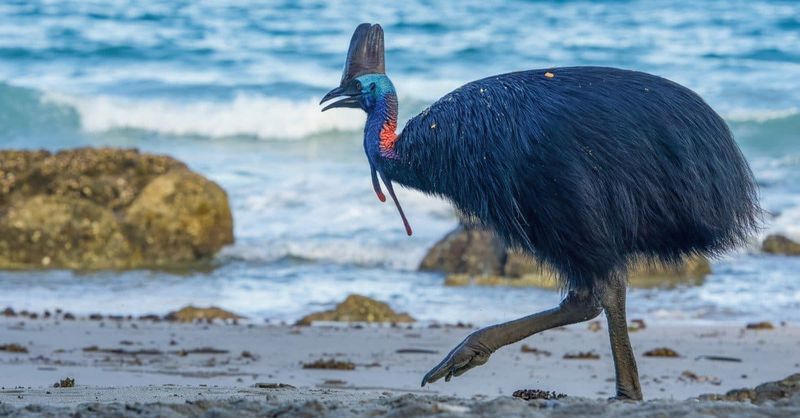
Despite its size, the cassowary can reach impressive speeds. Imagine a bird that can sprint up to 30 miles per hour, leaving potential threats in its dust. This speed, combined with its agility, makes the cassowary a master escape artist. In the tangled foliage of its rainforest home, this speed is a vital survival tool, ensuring it can elude predators swiftly. It’s a surprising trait for such a large bird, contributing to its reputation as a formidable and elusive creature.
Solitary Nature
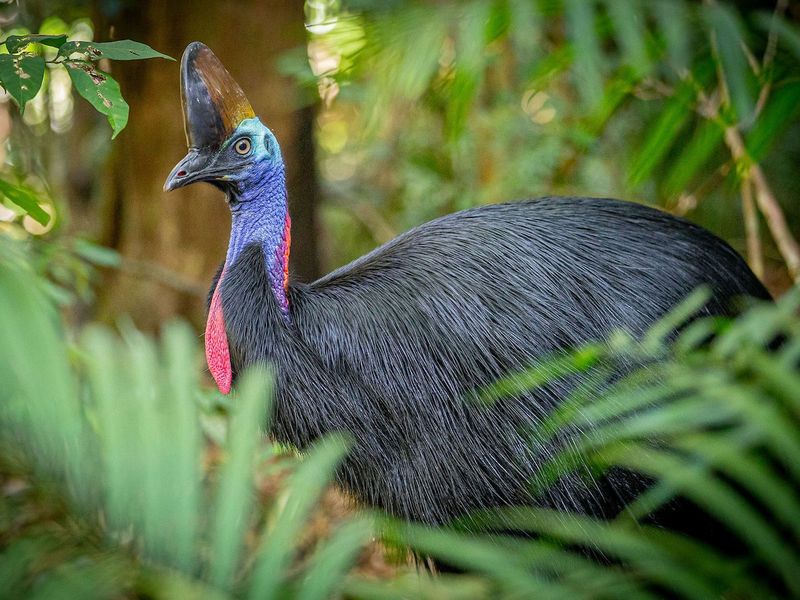
Cassowaries are solitary birds, preferring the quiet company of their own thoughts in the vast expanse of the rainforest. This solitary nature means they are often seen alone, patrolling their territory with keen awareness. This independence is a survival strategy, allowing them to avoid confrontations and reduce competition for resources. In the lush solitude of the jungle, the cassowary thrives, a solitary sentinel of its leafy realm. This lifestyle underscores its mysterious and enigmatic presence in its natural habitat.
Protective Parent
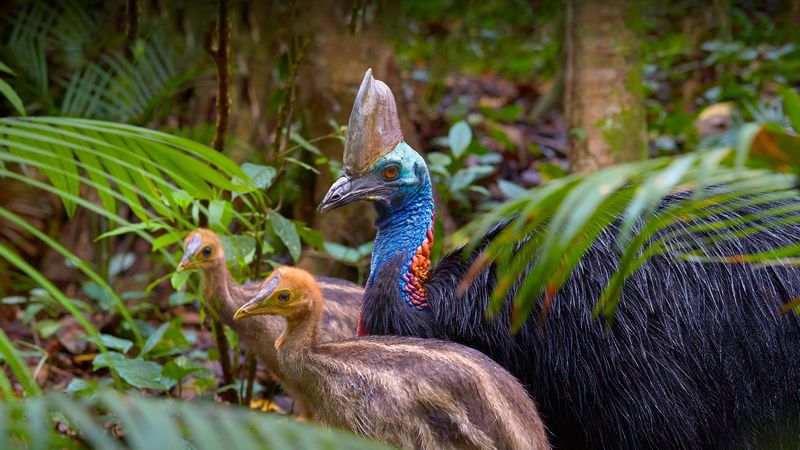
While generally solitary, cassowaries are fiercely protective when it comes to their offspring. The male cassowary takes on the role of incubating the eggs and caring for the chicks. This nurturing behavior is a stark contrast to its otherwise solitary life. The cassowary’s dedication to its young ensures the survival of the next generation, highlighting a softer side to its otherwise formidable reputation. In this parental role, the cassowary displays a balance of ferocity and tenderness, a guardian of its precious progeny.
Foraging Skills
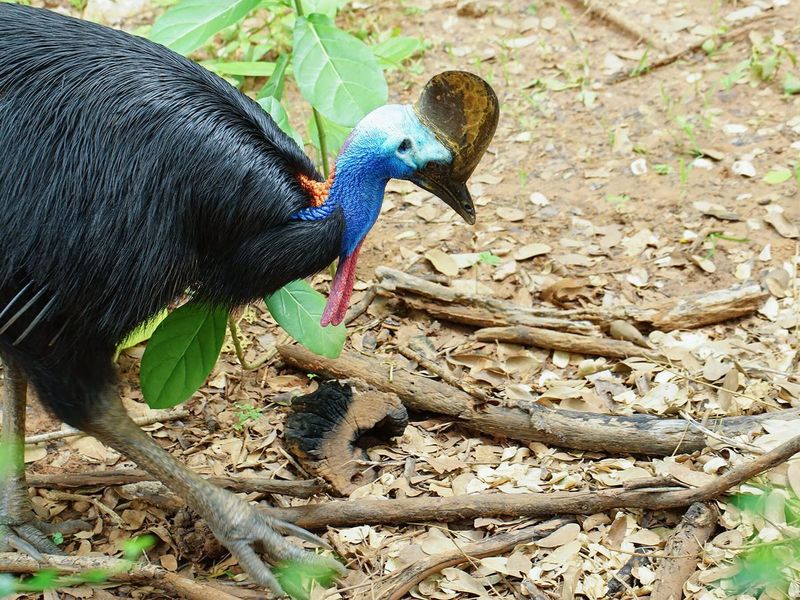
Cassowaries are adept foragers, with a diet that includes a wide variety of fruits, seeds, and small animals. Their foraging habits are crucial for the ecosystem, as they help in seed dispersal, promoting forest regeneration. This role as a gardener of the forest adds a layer of importance to their presence. Their diet ensures they maintain the delicate balance of their habitat, proving they are much more than just a dangerous bird. It’s a testament to their integral role in the rainforest’s health and vitality.
Vocal Communication

Cassowaries have a unique way of communicating through deep, resonant calls that echo through the forest. These calls serve multiple purposes, from marking territory to finding mates. The cassowary’s vocalizations are a vital part of its interaction with the environment, allowing it to maintain its solitary lifestyle while still staying connected. This vocal prowess adds another dimension to its complex behavior, making it a bird that’s as audibly impressive as it is visually striking.
Rainforest Sentinel
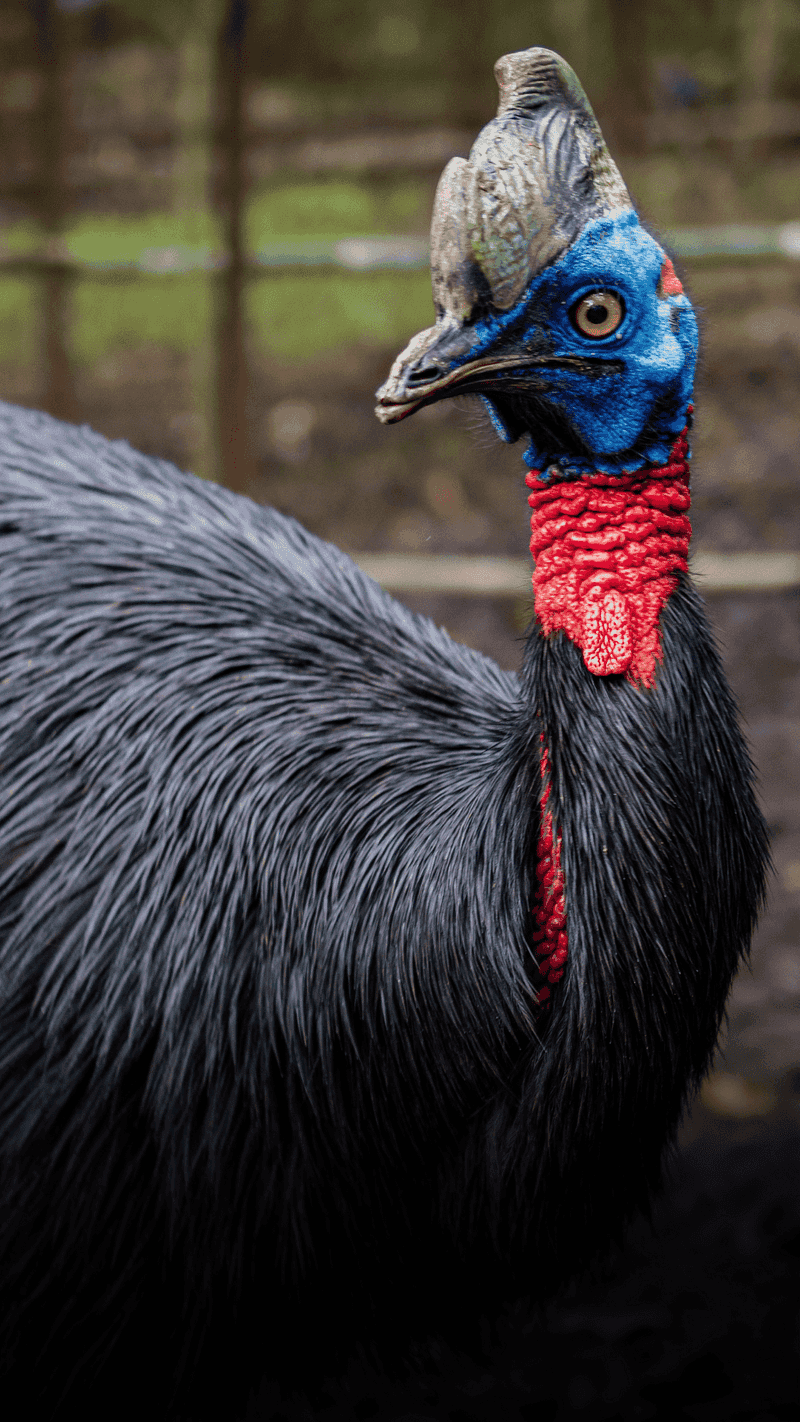
The cassowary is often regarded as a sentinel of the rainforest, its presence a testament to the health of its ecosystem. This bird plays a critical role in maintaining the balance of its environment, from seed dispersal to its interaction with other species. In standing as a guardian of the forest, the cassowary helps to ensure the sustainability and vitality of its habitat. Its role is a reminder of the interconnectedness of all living things and the importance of preserving such majestic creatures.

